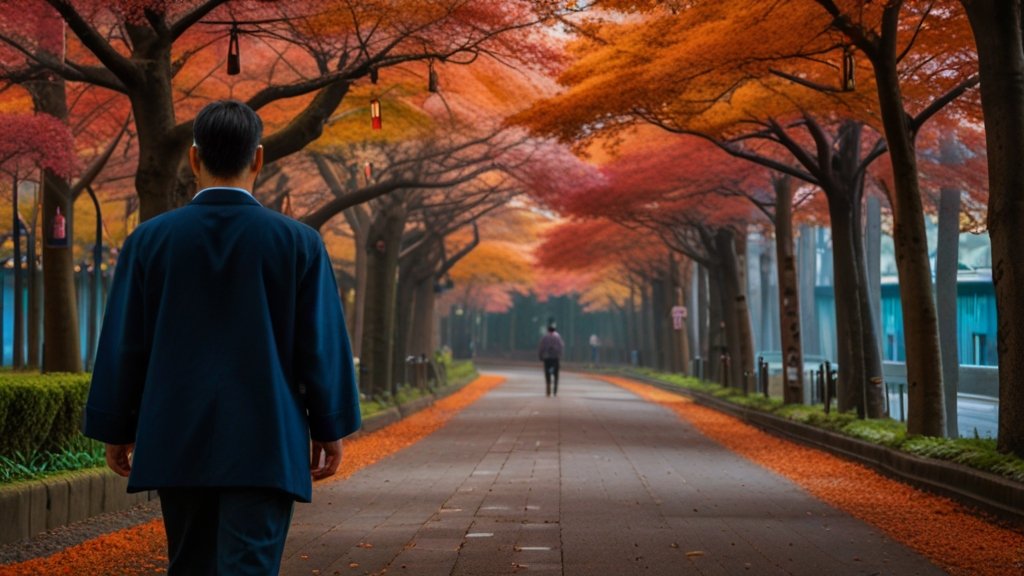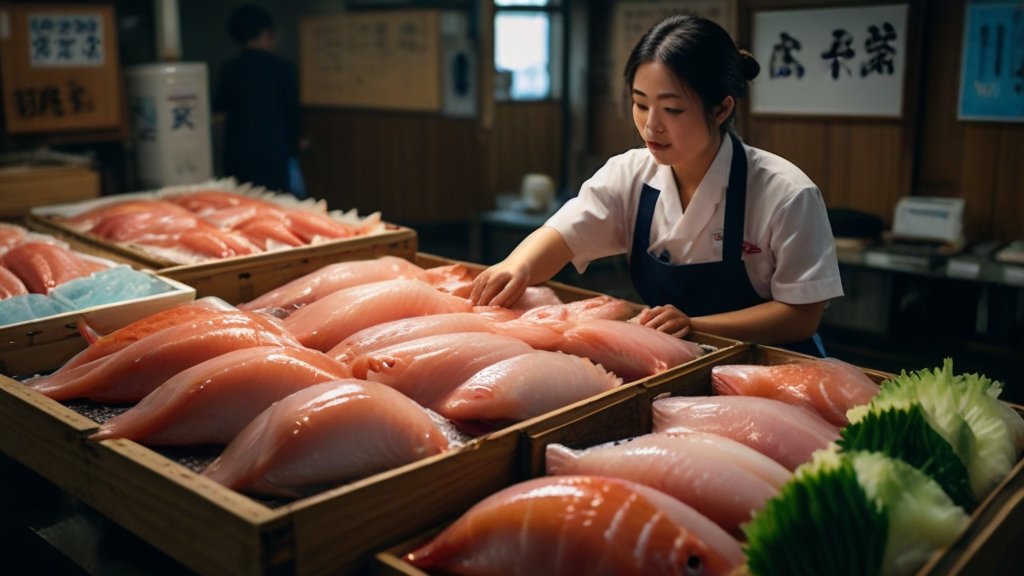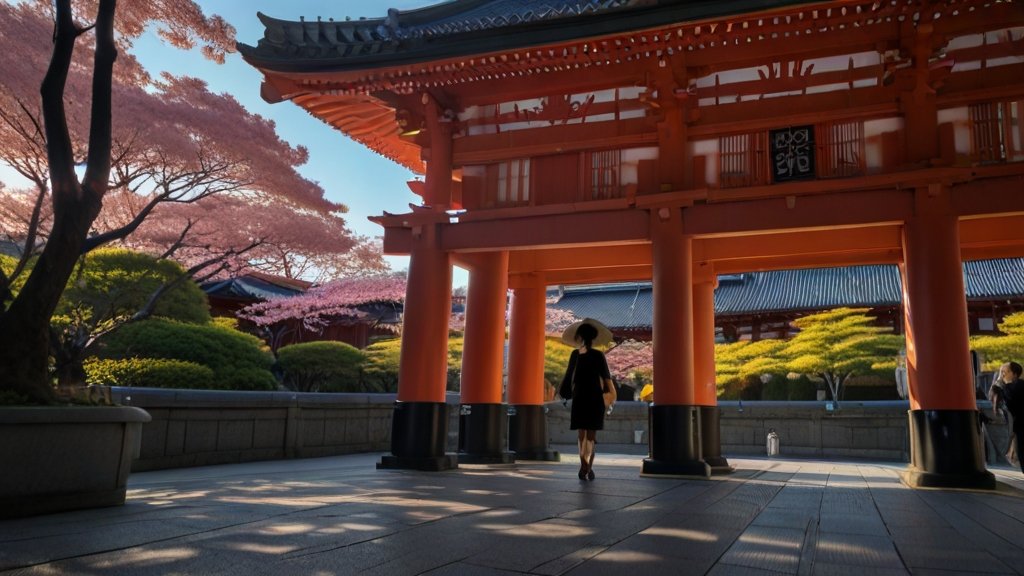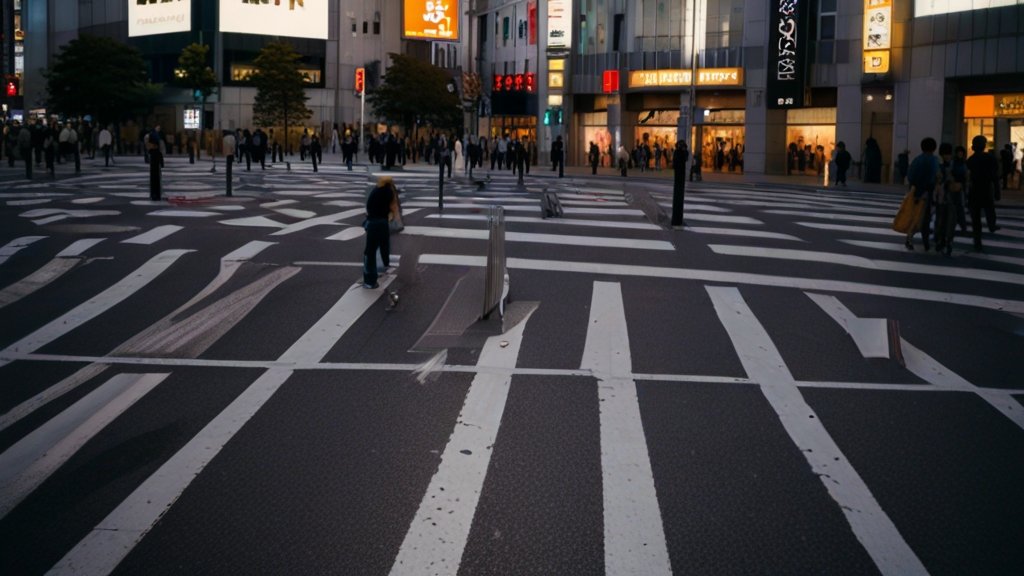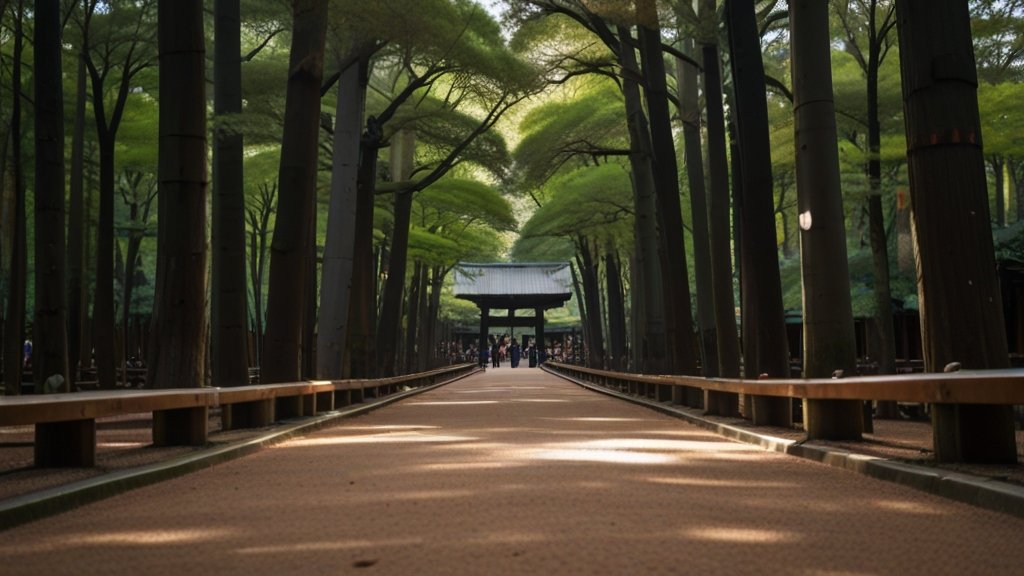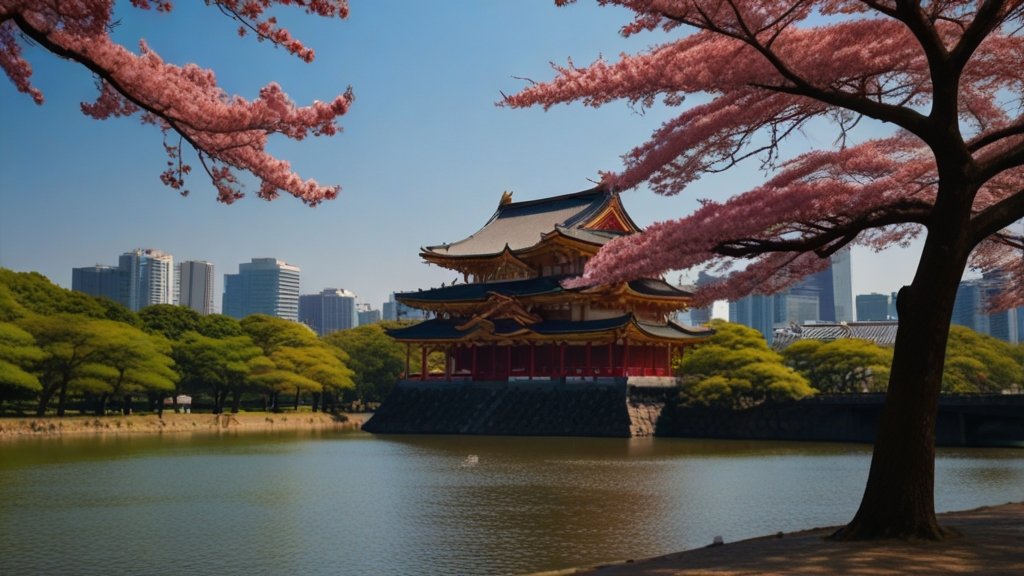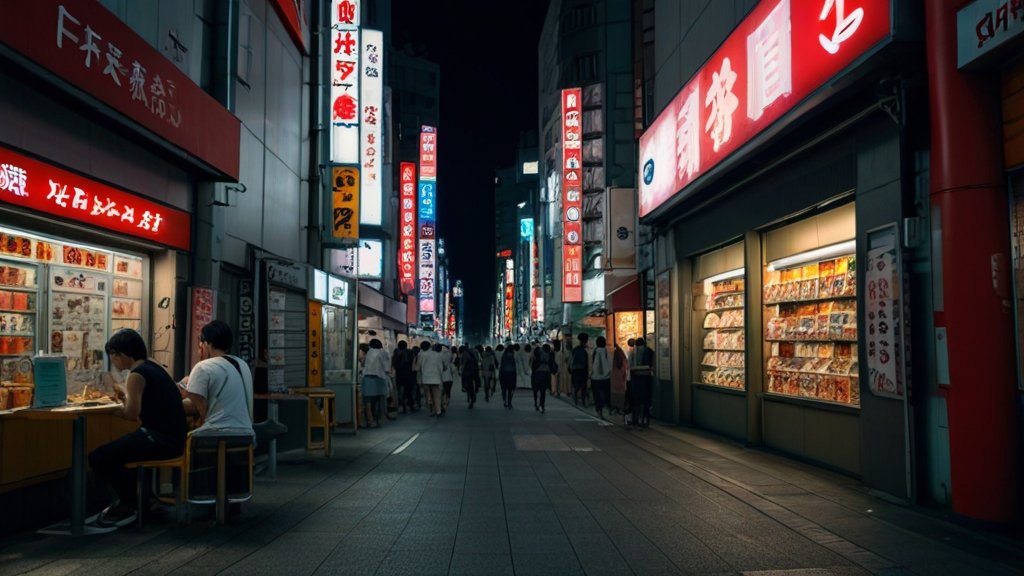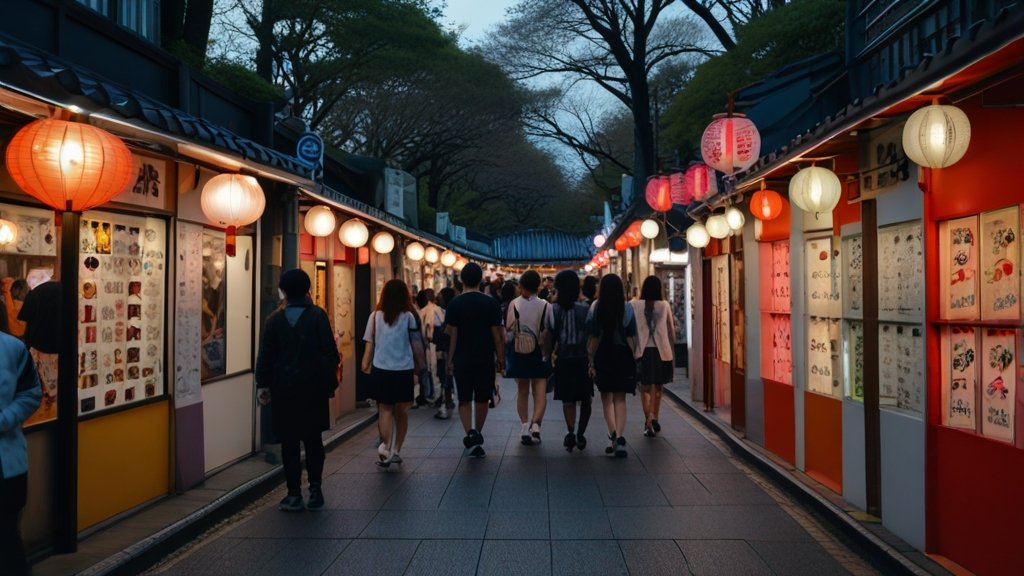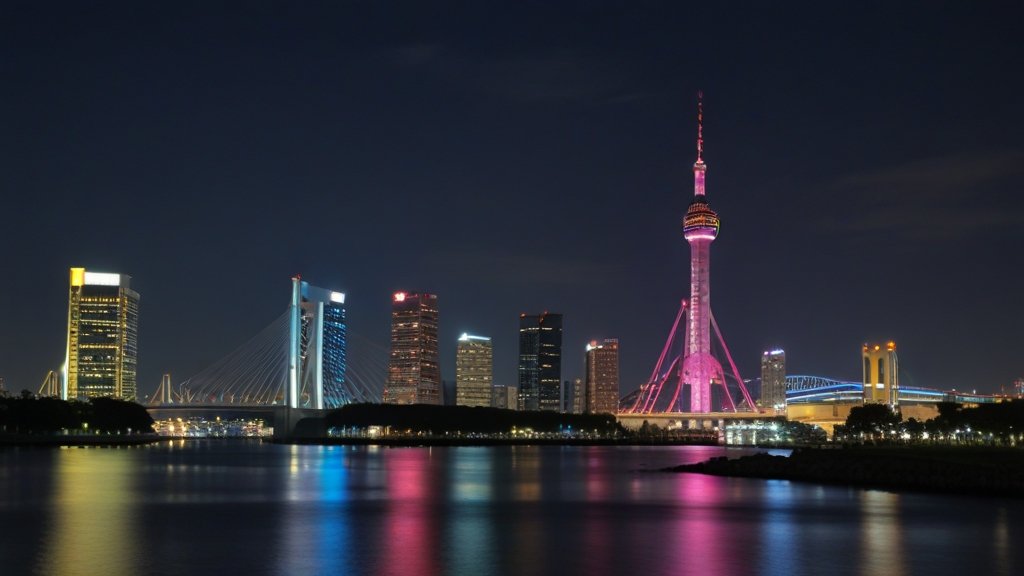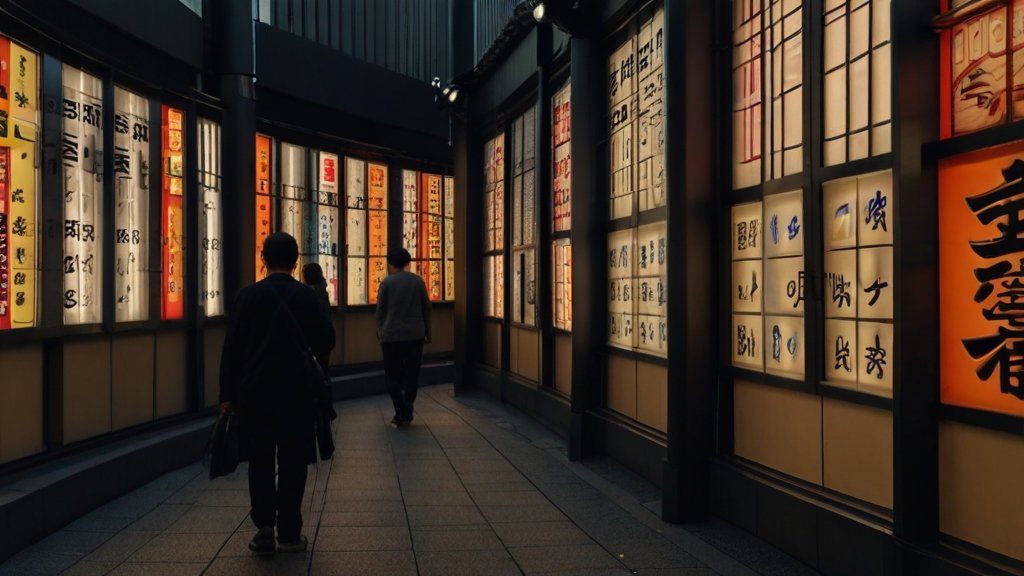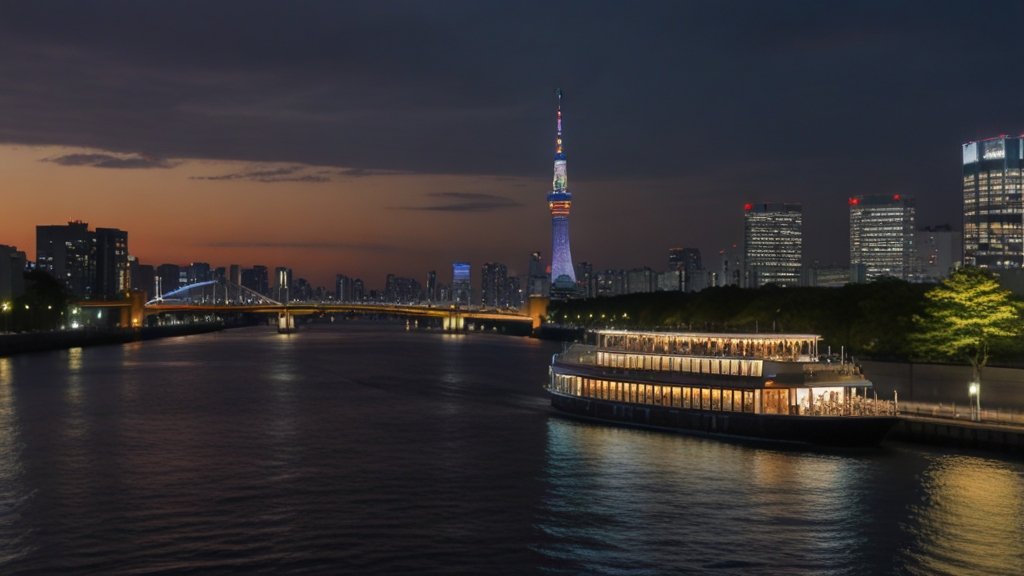Table of Contents
ToggleThe Pulse of Tokyo Tokyo 5-Day Itinerary
Welcome to the bustling metropolis of Tokyo, where ancient traditions harmoniously coexist with futuristic innovations. In this Tokyo 5-Day Itinerary, we’ll guide you through the city’s iconic landmarks, hidden gems, and mouthwatering culinary delights. Whether you’re a culture enthusiast, a foodie, or an urban explorer, Tokyo promises an unforgettable experience. Buckle up as we dive into the heart of Japan!
In this comprehensive guide, we’ve curated the ultimate Tokyo itinerary, ensuring you make the most of your 5 days in this captivating city. So grab your passport, pack your curiosity, and let’s dive into the whirlwind that is Tokyo! 🗼🌸🍣
Day-by-Day Itinerary
Day 1: Tsukiji Fish Market and Senso-ji Temple
Tsukiji Fish Market: Where Culinary Dreams Come Alive
A Brief History of Tsukiji Market
In the heart of Tokyo lies a culinary wonderland: Tsukiji Outer Market. This vibrant hub, once catering primarily to professionals, now beckons food enthusiasts, tourists, and locals alike. Let’s dive into the fascinating history and flavors of this iconic market.
- Reclaimed Land: In 1657, after the Great Fire of Meireki devastated Edo (Old Tokyo), the Tokugawa shogunate reclaimed land from Tokyo Bay. This reclaimed area was named Tsuki-ji, meaning “constructed land.” Nestled within Tsukiji is the Namiyoke Inari Shrine, a guardian against the waves that has silently watched over the market for centuries.
- Birth of the Fish Market: Following the 1923 Great Kanto Earthquake, the Nihonbashi Fish Market was relocated to Tsukiji in 1935. The district transformed into a bustling town, with some buildings standing for over 80 years. These narrow, maze-like streets hold secrets waiting to be discovered.
- Tsukiji’s Future: As Japan’s culinary reputation soared globally in the 1980s, Tsukiji Market attracted curious visitors from around the world. Today, it remains a captivating blend of tradition and innovation.
Three Ways to Savor Tsukiji Outer Market
- Shop: Tsukiji Outer Market is a treasure trove for food professionals. Here, you’ll find ingredients sourced with a discerning eye. From exotic seafood to rare spices, the market caters to your culinary aspirations.
- Eat: Prepare your taste buds for a feast! Sample ready-to-eat sushi, sashimi, and other Japanese delicacies. Don’t miss the bite-sized egg rolls—a perfect introduction to Tsukiji’s flavors.
- Experience: Dive deeper into the world of food. Learn the art of fish cutting, explore kitchenware shops, and immerse yourself in the sensory symphony of Tsukiji.
Senso-ji Temple: Where History and Spirituality Converge
Discover Tokyo’s Oldest and Most Revered Temple
A Glimpse into Eternity
Senso-ji, also known as Asakusa Kannon, stands as a testament to time—a bridge between ancient traditions and modern fervor. Nestled in the vibrant Asakusa district of Tokyo, this Buddhist temple beckons pilgrims, tourists, and seekers alike. Let’s unravel the mystique of Senso-ji, where vivid colors, bustling streets, and sacred rituals intertwine.
History: From River Discovery to Spiritual Haven
- The Founding Legend: In the year 628 AD, two fishermen—brothers Hinokuma Hamanari and Hinokuma Takenari—discovered a sacred statue of the bodhisattva Kannon (Avalokiteśvara) in the Sumida River. Recognizing its sanctity, the village chief, Hajino Nakamoto, transformed his home into a small temple in Asakusa. Thus began the legacy of Senso-ji, making it Tokyo’s oldest temple.
- Tokugawa Patronage: During the Tokugawa shogunate, Senso-ji earned the prestigious title of tutelary temple for the Tokugawa clan. Its spiritual influence extended beyond the physical temple grounds.
- Surviving Adversity: World War II dealt a devastating blow to Senso-ji, reducing it to rubble during the 1945 air raid on Tokyo. Yet, like a phoenix, the main hall rose anew from the ashes—a symbol of rebirth and peace. A resilient tree within the courtyard, scarred by a bomb, mirrors the temple’s own resilience.
Features: Where Culture and Devotion Merge
- Kaminarimon Gate: The imposing Thunder Gate guards the entrance. Its massive red lantern and fierce statues set the tone for what lies beyond.
- Nakamise-dōri: The lively shopping street leading to the temple is Nakamise-dōri. Here, traditional stalls offer everything from lucky charms to delectable street food. Don’t miss the omikuji (fortune-telling slips)!
- Main Hall: Step into the heart of Senso-ji. The main hall houses the revered Kannon statue. Devotees light incense, bow, and seek blessings.
- Five-Story Pagoda: Adjacent to the temple, the pagoda stands tall, each level representing an element of Buddhist cosmology.
Shibuya Crossing: Where Chaos and Harmony Collide
Navigating the World’s Busiest Pedestrian Intersection
A Symphony of Feet and Neon Lights
In the heart of Tokyo’s Shibuya district, a mesmerizing spectacle unfolds—a symphony of human movement, neon signs, and anticipation. Welcome to Shibuya Crossing, where chaos and harmony dance together. Let’s step into this kinetic canvas and explore its vibrant rhythm.
History: The Birth of a Phenomenon
- Inauguration: In 1973, Shibuya Crossing was born—an intersection outside Shibuya Station’s Hachikō exit. Little did anyone know that this seemingly ordinary crossing would evolve into a global phenomenon.
- Olympic Spotlight: During the 2016 Summer Olympics closing ceremony, Shibuya Crossing took center stage, teasing the world with a glimpse of Tokyo’s energy ahead of the 2020 Summer Olympics.
- Halloween Havoc: In recent years, Shibuya Crossing has become a Halloween hotspot. Young revelers, some in elaborate cosplay, flood the streets. The chaos is intoxicating, like a carnival of souls.
The Scramble Dance: Foot Traffic in Harmony
- Pedestrian Ballet: Shibuya Crossing is no ordinary crosswalk. It’s a choreographed ballet of thousands—locals, tourists, and dreamers—moving in sync. At midnight or dawn, foot traffic remains relentless.
- Traffic Jams? Not Here: Remarkably, road traffic rarely snarls at this bustling junction, even during rush hours. Every green light sees up to 3,000 pedestrians crossing—a symphony of synchronized steps.
- Daily Footfall: On weekdays, an estimated 260,000 pedestrians traverse the crossing. Non-working days witness even more—up to 500,000 people weaving through the neon-lit labyrinth.
Cultural Cameos and Cinematic Magic
- Lost in Translation: Remember the walking dinosaur advertisement visible on the QFRONT building? Yes, that’s Shibuya Crossing—the same one featured in the iconic film Lost in Translation.
- Fast and Furious: The adrenaline-fueled drifts of The Fast and the Furious: Tokyo Drift raced through these neon-lit streets, immortalizing the crossing.
- Resident Evil: Zombies and survival horror met Shibuya Crossing in Resident Evil: Afterlife. The chaos intensified as the undead roamed the scramble.
Whether you’re lost, found, or simply caught in the current, Shibuya Crossing invites you to dance with the neon lights. 🚶♂️🌆🎶
Meiji Shrine: Where Tranquility Meets Majesty
Discover Tokyo’s Spiritual Oasis
A Forest Sanctuary
Meiji Shrine (Meiji Jingu), nestled in the heart of Shibuya, stands as a serene testament to Japan’s imperial history and Shinto spirituality. Dedicated to Emperor Meiji and Empress Shōken, this sacred oasis invites visitors to step away from the city’s hustle and immerse themselves in tranquility.
History: A Tribute to the Meiji Era
- Emperor Meiji’s Legacy: After Emperor Meiji’s passing in 1912, the Japanese Diet resolved to honor his pivotal role in the Meiji Restoration. An iris garden near Shibuya, a place he and Empress Shōken frequented, was chosen for the shrine’s construction.
- Collective Effort: Construction began in 1915, with civic associations and youth groups from across Japan contributing labor and funding. The shrine’s traditional nagare-zukuri architecture, using Japanese cypress and copper, symbolized unity and reverence.
- Completion and Rebirth: Meiji Shrine was formally dedicated on November 3, 1920, and completed by 1926. Destroyed during World War II, it rose anew through public fundraising efforts and was completed in October 1958.
Shrine Complex: A Verdant Haven
- Forest Enclave: Spread across 70 hectares (170 acres), Meiji Shrine’s evergreen forest shelters 120,000 trees of 365 species. A tranquil escape from urban chaos, it beckons contemplation.
- Naien and Gaien: The shrine comprises two areas:
- Naien: The inner precinct houses the main hall, where visitors pay respects to Emperor Meiji and Empress Shōken.
- Gaien: The outer precinct includes the Meiji Memorial Picture Gallery, a museum showcasing the emperor’s life.
Imperial Palace, Tokyo: Where History and Majesty Converge
Discover the Heart of Japan’s Monarchy
Introduction: A Regal Haven
The Imperial Palace stands as a testament to Japan’s rich history and enduring monarchy. Nestled in the heart of Tokyo, this majestic complex is more than just a residence—it’s a living symbol of tradition, resilience, and continuity.
History: From Edo Castle to Imperial Splendor
- Edo Castle: The Imperial Palace occupies the site of the former Edo Castle, which served as the seat of power for the Tokugawa shogunate from 1603 to 1867. After the Meiji Restoration, Emperor Meiji moved the imperial capital from Kyoto to Tokyo, and the castle became the nucleus of the new imperial residence.
- Construction and Transformation: The current Imperial Palace was inaugurated in 1920. It blends traditional Japanese architecture with modern functionality. The main buildings include the Kyūden (official residence), where ceremonies unfold, and various structures for administrative purposes.
- Symbolic Significance: The palace grounds, spanning approximately 1.15 square kilometers, are more than mere real estate. They embody Japan’s historical continuity, resilience, and reverence for its imperial lineage.
Grounds and Gardens: A Tranquil Oasis
- Kyūden: The heart of the palace, the Kyūden, hosts imperial ceremonies, receptions, and official functions. Its elegant design reflects centuries of refined aesthetics.
- Fukiage Garden: A serene oasis within the palace, the Fukiage Garden offers tranquility amid meticulously landscaped greenery. Stroll along its paths and savor the balance between nature and architecture.
- East Gardens: Open to the public, the East Gardens showcase seasonal beauty. Explore historic ruins, bridges, and lush flora. Don’t miss the Tōkagakudō (Music Hall) and Ninomaru Garden.
Akihabara: Tokyo’s Electric Wonderland
Where Electronics, Otaku Culture, and Vibrant Energy Collide
The Heartbeat of Geeks and Gamers
Akihabara—also affectionately known as Akiba—is a district pulsating with energy in central Tokyo. It’s a haven for tech enthusiasts, anime aficionados, and anyone seeking a sensory overload of neon lights, gadgets, and pop culture.
History: From Electronics to Otaku Paradise
- Origins: Akihabara’s roots trace back to a local shrine, which lent it the name “Akiba.” However, over the decades, it has transformed into something far more electrifying.
- Electronics Hub: Initially, Akihabara gained fame for its electronics shops. Hundreds of stores line the bustling Chuo Dori street, offering everything from cutting-edge computers to vintage cameras, mobile phones, and electronic components.
- Otaku Culture Emerges: But Akihabara’s character evolved. It became the epicenter of otaku culture—a subculture of diehard fans obsessed with anime, manga, and video games. Amid the electronics retailers, you’ll find stores dedicated to collectibles, figurines, and retro video games.
Exploring Akihabara: A Geek’s Paradise
- Electronics Wonderland:
- Chuo Dori: The main street teems with electronics shops, from tiny stalls to large retailers.
- Yodobashi Camera: A colossal electronics store near the station, offering gadgets galore.
- Otaku Delights:
- Anime and Manga Stores: Scattered among the electronics shops, these stores cater to your animated cravings.
- Maid Cafes: Experience waitresses dressed as maids or anime characters while sipping coffee.
- Manga Cafes (Manga Kissa): Read comics, watch videos, and surf the internet in cozy corners.
- Tax-Free Shopping:
- Many stores offer tax-free shopping for foreign tourists, so indulge guilt-free!
Fun Facts and Figures
- Sundays: Chuo Dori closes to car traffic from 13:00 to 18:00 (17:00 from October through March).
- Redevelopment: Akihabara has seen modern additions alongside its traditional shops, including the massive Yodobashi store.
Recommended Stops:
- Sofmap: Specialized shops for computers, software, and amusement.
- Laox: Explore hobby items, games, souvenirs, and lifestyle goods.
Whether you’re hunting for the latest tech or immersing yourself in anime wonder, Akihabara promises an electrifying adventure. 🎮📷🌟
Day 4: Harajuku and Odaiba
Harajuku: Where Fashion Meets Fantasy
Harajuku (原宿) is a vibrant district in Shibuya, Tokyo, known internationally as a center of Japanese youth culture and fashion. Let’s dive into the fascinating world of Harajuku:
- Geography and Area:
- Harajuku extends from Harajuku Station to Omotesando. On official maps, it corresponds to Jingūmae 1 chōme to 4 chōme in Shibuya ward.
- The district encompasses not only the main thoroughfares but also smaller backstreets like Takeshita Street and Cat Street. These winding lanes are filled with unique boutiques, cafes, and hidden gems.
- Fashion and Youth Culture:
- Harajuku is synonymous with bold, eclectic fashion. It’s where trends are born, and individuality thrives.
- Themed cafes, vintage stores, and boutiques line the streets. You’ll find everything from kawaii (cute) to gothic, streetwear, and avant-garde styles.
- Takeshita Street is a bustling pedestrian lane where young fashionistas shop for quirky accessories, colorful clothing, and statement pieces.
- Omotesando:
- Adjacent to Harajuku, Omotesando is a more upscale shopping area. It’s often called the “Champs-Élysées of Tokyo” due to its tree-lined boulevard and luxury boutiques.
- Here, you’ll encounter high-end fashion brands, elegant cafes, and architectural marvels like the Omotesando Hills shopping complex.
- Landmarks and Attractions:
- Meiji Shrine: A serene oasis surrounded by lush forest, Meiji Shrine is a must-visit. It’s dedicated to Emperor Meiji and Empress Shoken.
- Yoyogi Park: Adjacent to Meiji Shrine, this spacious park hosts picnics, yoga sessions, and cultural events.
- Yoyogi National Gymnasium: An iconic architectural masterpiece designed by Kenzo Tange.
- Historical Roots:
- In the pre-Edo period, Harajuku was a small post town on the Kamakura Highway.
- During the Edo period, an Iga clan residence was established here to defend Edo (now Tokyo) due to its strategic location.
- The area was home to shogunate retainers and rice mills powered by the Shibuya River watermill.
- Tourist Hotspot:
- Harajuku attracts both domestic and international tourists. Its blend of tradition, modernity, and youthful energy makes it irresistible.
- Whether you’re a fashion enthusiast, a culture lover, or simply curious, Harajuku promises an unforgettable experience.
So, put on your most daring outfit, explore the colorful streets, and immerse yourself in the captivating world of Harajuku! 🌟👗🎨
Odaiba: Where Futuristic Dreams Come True
1. Odaiba: Tokyo’s Entertainment Paradise
Odaiba, also known as Daiba, is a large artificial island situated in Tokyo Bay, just across the iconic Rainbow Bridge from central Tokyo. Its fascinating history dates back to the 1850s when it was initially constructed for defensive purposes. However, in the late 20th century, Odaiba underwent dramatic expansion, transforming into a vibrant seaport district. The 1990s marked a pivotal turning point, as Odaiba evolved into a major hub for commerce, residential living, and leisure activities.
2. Attractions an
d Activities in Odaiba
Here are some of the best things to do in Odaiba:
- Explore the Unique Digital World of teamLab Planets:
- teamLab is a renowned collective of digital artists, engineers, and architects. Their exhibition, teamLab Planets TOKYO, located near Shin-Toyosu Station, immerses visitors in a mesmerizing digital wonderland. 🌟
- The exhibition features four massive spaces filled with interactive digital artworks. Picture yourself surrounded by LED lights, image projections, water displays, and even levitating flowers. 🌸
- Visitors are required to roll up their pants and walk barefoot through the water-based exhibits, creating an unforgettable experience. 🚶♂️💧
- Address: 6 Chome-1-16 Toyosu, Koto City, Tokyo 135-0061 .
- Enjoy Pleasure Cruising and Shopping:
- Odaiba is a modern entertainment and shopping hub. Take a leisurely cruise along the bay, explore elaborate shopping malls like AQUA CiTY and DiverCity, and indulge in seaside fun. 🛍️⛴️
- Don’t miss the chance to visit the National Museum of Emerging Science and Innovation, where science and technology come alive. 🌐🔬
- Marvel at the life-sized Gundam statue, a treat for anime enthusiasts. 🤖
- Admire the Rainbow Bridge, which connects Odaiba to the rest of Tokyo. 🌈
- And yes, you’ll find a replica of the Statue of Liberty here too! 🗽
- Hotels, Restaurants, and More:
- Odaiba boasts several hotels, making it a great base for exploring Tokyo.
- Savor diverse cuisines at waterfront restaurants while enjoying stunning views of Tokyo Bay.
- Whether you’re a sports enthusiast, a culture lover, or simply seeking relaxation, Odaiba has something for everyone.
3. Ongoing Redevelopment and Future Prospects
Parts of Odaiba are currently undergoing a major redevelopment, slated for completion by 2025. While some beloved attractions have closed down, the spirit of Odaiba remains vibrant. So, whether you’re a local or an international visitor, make sure to include Odaiba in your Tokyo itinerary! 🗺️🌟
Day 5: Ginza and Sumida River Cruise
Ginza: Where Timeless Elegance Meets Unparalleled Luxury
- Overview:
- Location: Ginza is situated in the Chūō ward of Tokyo.
- Features: It boasts numerous department stores, boutiques, art galleries, restaurants, nightclubs, and cafes.
- Real Estate Value: The land value in the district’s center is staggering, with one square meter worth over ten million yen, making it one of Japan’s most expensive real estate areas.
- Historical Context:
- Silver Mint: From 1612 to 1800, the area that is now Ginza was home to a silver coin mint (hence the name “Ginza,” which means “silver mint” in Japanese).
- Post-Earthquake Evolution: Following the devastating 1923 Great Kanto Earthquake, Ginza transformed into an upmarket shopping district.
- Shopping Highlights:
- Seiko House Ginza: The iconic clock tower of Seiko House stands at the northwest corner of Ginza’s centrally located Ginza 4-Chome junction. Most of the building houses the Wako department store, specializing in watches, jewelry, and luxury items.
- Ginza Six: Opened in 2017, Ginza Six is the district’s largest shopping complex. It features cosmetics, fashion, food, interior design, a Tsutaya art bookshop, a rooftop garden, and even a Noh theater in its basement.
- Tokyu Plaza Ginza: This 14-floor shopping complex, opened in 2016, offers tax-free shopping, dining, and an open rooftop with city views.
- Mitsukoshi: Established in 1930, the Ginza store of Mitsukoshi department store chain spans twelve floors, offering a wide range of goods and services.
- Matsuya: Matsuya’s Ginza store provides fashion, household goods, a pet shop, a travel agency, and an exhibition hall across its eleven floors.
- Marronnier Gate: This shopping complex, comprising three buildings (including the former Printemps department store), houses various shops, boutiques, and the Ginza branch of the popular Hands store.
- Atmosphere:
- Pedestrian Zone: On weekend afternoons, the central Chuo Dori street becomes a large pedestrian zone, closed to automobile traffic from noon to 18:00 (17:00 from October through March).
- Old Money Vibes: Ginza, Tokyo’s first Western-style shopping district, still exudes an air of old-world elegance, attracting discerning shoppers and visitors.
Whether you’re strolling along the wide boulevards or exploring the narrow lanes, Ginza promises a delightful blend of luxury, culture, and culinary delights. 🛍️
Sumida River Cruise: Discovering Tokyo’s Hidden Gems
The Sumida River Cruise, also known as the Sumida Line, offers a delightful way to explore Tokyo from a unique perspective. Here are the key points:
- Route and Purpose:
- The Sumida River Cruise connects several piers around the Tokyo Bay Area (including Hinode, Hama Rikyu, Nihonbashi, Odaiba, and Toyosu) with Asakusa.
- Asakusa is convenient for visiting the Senso-ji Temple, exploring the museum district of Ueno, and being close to the iconic Tokyo Sky Tree.
- The cruise provides an alternative to subways and trains, allowing you to experience a different view of the city.
- Scenic Views:
- As you glide along the Sumida River, you’ll witness a side of Tokyo that’s often hidden from view.
- The river offers glimpses of both modern and traditional aspects of the city, reminding us that Tokyo is indeed a bustling port city.
- Futuristic Boats:
- Three futuristic boats operate on various routes, stopping at different places.
- These boats ply the waters between Asakusa and the Tokyo Bay Area, providing a mix of convenience and scenic beauty.
- Pier Locations:
- The Sumida River Cruise connects several piers:
- Hinode
- Hama Rikyu
- Nihonbashi
- Odaiba
- Toyosu
- The Sumida River Cruise connects several piers:
- Operating Hours and Admission:
- The cruise operates from 10:00 AM to 5:45 PM.
- Admission prices (from Asakusa to Hinode Pier):
- Adults: JPY 860
- Children (6-11 years old): JPY 430
- Nearest Transport (Asakusa):
- Subway: 1-minute walk from exit 5 of Asakusa Station on the Tokyo Metro Ginza line and Toei Asakusa line.
- Train: 2-minute walk from Asakusa Station on the Tobu Skytree line.
- Nearest Hotels:
- You can find hotels near the Sumida River Cruise by checking availability and pricing on platforms like Booking.com or Agoda.com.
- Contact Information:
- Telephone: +81-3-5733-4811
- Official Website (English)
Remember, this cruise not only transports you but also offers a delightful journey through Tokyo’s waterways. Enjoy the scenic views and immerse yourself in the city’s unique charm! 🚢🌸🏙️
Traveler Statistics (Last 5 Years)
| Year | Incoming Travelers (in millions) |
|---|---|
| 2019 | 31.4 |
| 2020 | 9.2 (COVID-19 impact) |
| 2021 | 12.8 |
| 2022 | 18.6 |
| 2023 | 22.0 (post-pandemic recovery) |
Frequently Asked Questions (FAQs) for Tokyo 5-Day Itinerary
| Question | Answer |
|---|---|
| 1. How long should I spend in Tokyo for a 5-day trip? | Five days gives you a great look at the city and time for a day trip outside of Tokyo. |
| 2. Where should I base myself in Tokyo? | Choose a central location to save time. |
| 3. What’s the best way to explore modern Tokyo? | On Day 1, visit the west side, including Harajuku, Shibuya, and Roppongi. |
| 4. What about traditional Tokyo? | Day 2 is for exploring the east side, including Asakusa and Ueno. |
| 5. Can I take a day trip from Tokyo? | Absolutely! Day 3 is perfect for a trip to Nikko, Kamakura, or Mt. Fuji. |
| 6. What attractions should I visit in Tokyo? | Explore Meiji-jingu Shrine, Senso-ji Temple, and more. |
| 7. How do I get around Tokyo using public transportation? | Tokyo has an efficient subway and train system. |
| 8. Are there any cultural etiquettes I should be aware of? | Yes, learn about Japanese customs and manners. |
| 9. Should I use credit cards or cash in Tokyo? | Both are widely accepted, but carry some cash. |
| 10. What local dishes must I try? | Savor sushi, ramen, tempura, and matcha treats. |
| 11. Do I need to book tickets for attractions in advance? | It’s recommended for popular sites. |
| 12. How much should I budget for a 5-day trip to Tokyo? | Budget around $100 to $150 per day, excluding accommodation. |
| 13. Are there any cultural events or festivals during my visit? | Check local event calendars for festivals and celebrations. |
| 14. What’s the itinerary for Day 1? | Visit Harajuku, Shibuya, and Roppongi. |
| 15. And Day 2? | Explore Asakusa, Ueno, and Tokyo Station. |
| 16. What’s a good day trip option? | Consider Nikko, Kamakura, or Mt. Fuji. |
| 17. What’s on the agenda for Day 4? | Visit the Imperial Palace Area and Shinjuku. |
| 18. Any luxury hotel recommendations? | Try Mandarin Oriental, The Peninsula, Ritz-Carlton, or Conrad Tokyo. |
| 19. What’s the Day 5 itinerary? | Take a day trip to Mount Fuji. |
| 20. What’s the best time to visit Tokyo? | Spring (March to May) and autumn (September to November) are ideal. |
Remember, this is just a guide, and you can customize your Tokyo experience based on your interests! 🇯🇵✨
Pre-Trip Checklist for Tokyo 5-Day Itinerary
1. Essential Documents and Logistics:
- Visa for Japan: Check if your nationality requires a visa. Apply well in advance if needed.
- Valid Passport: Ensure it has at least six months of validity from your arrival date in Japan.
- Travel Insurance: Research and obtain travel insurance, especially if you have pre-existing medical conditions.
- Flight Timetables: Keep track of your flight details.
- Photocopies of Passport and Other Documents: Store these separately from the originals.
2. Clothing (All Seasons):
- Layered Clothing: Tokyo experiences varying temperatures throughout the year. Pack lightweight layers that you can add or remove as needed.
- Comfortable Walking Shoes: You’ll be exploring a lot, so choose supportive footwear.
- Great Socks: Invest in quality socks for comfort during long walks.
- Rain Gear: An umbrella or a waterproof jacket is essential, especially during the rainy season.
- Hat and Sunglasses: Protect yourself from the sun.
- Swimsuit: If you plan to visit hot springs or pools.
- Formal Attire: For any special occasions or dining out.
3. Additional Miscellaneous Items:
- Japanese Yen in Cash: While credit cards are widely accepted, having some cash is useful.
- Universal Electric Converter: Japan uses Type A and Type B outlets.
- Pocket Wi-Fi or SIM Card: Stay connected while exploring.
- Suica/Pasmo Card: Convenient for public transportation.
- Ghibli Museum Tickets: If you’re a Studio Ghibli fan, book these in advance.
4. Hiking and Outdoor Items (If Applicable):
- Hiking Boots or Sturdy Shoes: If you plan to explore nature trails or nearby mountains.
- Lightweight Backpack: For day trips.
- Reusable Water Bottle: Stay hydrated.
- Sunscreen and Insect Repellent: Protect yourself during outdoor activities.
- First Aid Kit: Basic supplies for minor injuries.
- Hiking Map or GPS Device: If you venture into less touristy areas.
Estimated Costs ( for reference )
| Category | Estimated Cost (per person) |
|---|---|
| Transportation | $150 (Suica card for trains and buses) |
| Accommodation | $800 (4-star hotel for 5 nights) |
| Food | $300 (diverse meals and street snacks) |
| Activities | $250 (entrance fees, tours, and experiences) |
| Total | $1,500 |
Remember to tailor this checklist to your specific needs and preferences. Have a fantastic trip to Tokyo! 🗼🌸🇯🇵
A Dance of Celestial Magic
As the Arctic winds whisper secrets to the night sky, the Northern Lights emerge—a celestial ballet of color and wonder. From the icy fjords of Norway to the vast tundras of Alaska, these luminous ribbons ignite our imaginations and remind us of the universe’s boundless artistry.
🌌 Call to Action: Share this article with fellow wanderers. Let them taste the magic, too. Leave a comment below, describing your own celestial encounter. And if you’re ready for an otherworldly adventure, subscribe to our newsletter—we’ll be your compass to the skies.
Remember: The Northern Lights are fleeting, but their memory lingers like stardust on our souls. 🌠✨
Safe travels, fellow stargazers! 🌟🌏🚀

